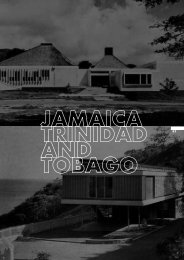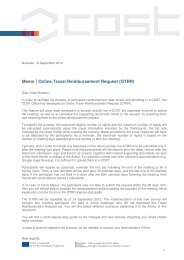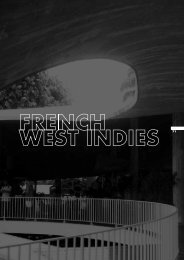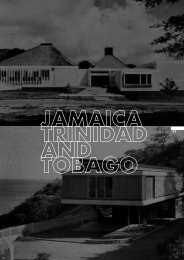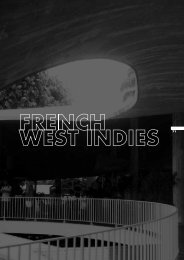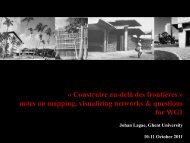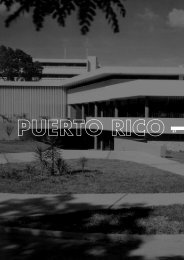PANJIM BETWEEN THE PAST AND MODERNITY
PANJIM BETWEEN THE PAST AND MODERNITY
PANJIM BETWEEN THE PAST AND MODERNITY
Create successful ePaper yourself
Turn your PDF publications into a flip-book with our unique Google optimized e-Paper software.
ARTICLES | 73A CONSTRUÇÃODA NOVA CAPITAL (1843 – 1882)Em 1843, a rainha D. Maria II (r. 1834-1853), poralvará de 22 de Março, criou a cidade de NovaGoa, sendo-lhe reconhecido o estatuto de capitaldo Estado Português da Índia, na sequência de propostasapresentadas pelo governador-geral LopesLima (1840-1842) e em 1841 pelo conde das Antas,governador em 1842-1843.No entanto, a nova cidade assim criada não correspondiaà pura e simples transferência para Pangimdas funções políticas, administrativas e simbólicasda velha capital: segundo o alvará real a cidade deNova Goa incluía Pangim mas era constituída portrês bairros, Pangim, Ribandar e Goa e abrangiauma longa área, “(…) comprehendendo em seuslimites todo o litoral da margem esquerda do rioMandovi desde a foz do mesmo Rio até á ponta deDaugim (…)“. 26Pangim era o primeiro e o maior bairro e compreendiaa zona defi nida pelo esteiro de Santa Inês apoente, o esteiro das Fontainhas a nascente, o RioMandovi a norte. A sul era limitado pela colina daConceição. Com áreas bastante distintas, o crescimentourbano estava longe de ser uniforme: SantaInês crescia em torno da sua igreja; a área centralsofria grandes transformações físicas, mas a fi xaçãoda população fazia-se vagarosamente; a área dasFontainhas ia-se consolidando a bom ritmo e constituíaa parte mais populosa de Pangim.Ribandar, ligado a Pangim pela ponte do conde deLinhares, ia até à igreja de S. Pedro. Era o bairroda aristocracia goesa e luso-descendente 27 e o localonde viviam muitos portugueses que se queixavamde não ter habitações condignas em Pangim 28 .Embora Kloguen, em 1827, refi ra que era um bairromais pequeno que Pangim e que Panelim, D. MariaII deixou bem explícita a importância que tinha nacidade quando o refere como o “(…) populoso eimportante Bairro de Ribandar (…)“ 29 . Era naturalque D. Maria se referisse nesses termos a Ribandar,já que este, ao efectuar a ligação entre Pangim e aVelha Cidade de Goa, era peça essencial na construçãoda ideia de que se tratava de uma únicacidade, dividida embora em bairros, uma cidadeque englobava, ainda e sempre, a antiga capital doEstado da Índia.of which will have the pillory, and three smallerones; seven streets 70 to 80 palms wide, as well asthat already mentioned, which runs along the banksof the river: the two old streets were widened andimproved” 24 . Dom Manuel also transferred divesepublic institutions, such as the Mint, to buldingsthat already existed and were rented or boughtfrom private owners.In 1835, the monasteries and convents in Goa wereclosed, following the liberal revolution and civil warin Portugal. The defi nitive abandonment of the oldcity was also a consequence of this.On the contribution of Dom Manuel to the developmentof Panjim area, Thomaz Ribeiro wrote in1870: “D. Manuel left everything levelled and thepavement of a large city drawn (…)” 25 . In otherwords, he left a plan – also referred to by ManuelLouzada when he spoke of the streets “measuredby string” – and the preparatory work for the realisationof that plan.BUILDING <strong>THE</strong>NEW CAPITAL (1843 – 1882)On 22 March 1843 Queen Maria II of Portugal(r. 1834-1853) issued a charter creating the city ofNew Goa. It was given the status of capital of the“State of India”, following proposals presented bythe Governor Lopes Lima (1840-1842) and by theCount of Antas in 1841.However, the new city thus created did not resultfrom the pure and simple transfer to Panjim of thepolitical, administrative and symbolic functions ofthe old capital: according to the Royal charter thecity of Nova Goa included Panjim but was madeup of three districts – Panjim, Ribandar and Goa– and it covered a large area “encompassing withinits limits all the left bank of the River Mandovi fromthe mouth of the river to Daugim point”. 26Panjim was the fi rst and largest district and wasmade up of the area demarcated by the Santa Inêscreek to the west, the Fontainhas creek to the eastand the River Mandovi to the north. To the southit was bordered by the Conceição hill. Comprisingvery different areas, the urban growth was far fromuniform in this district. Santa Inês grew around itschurch. The central area underwent major physicalPanjim between the past and modernityJuly 2007 | MURPHY 2



